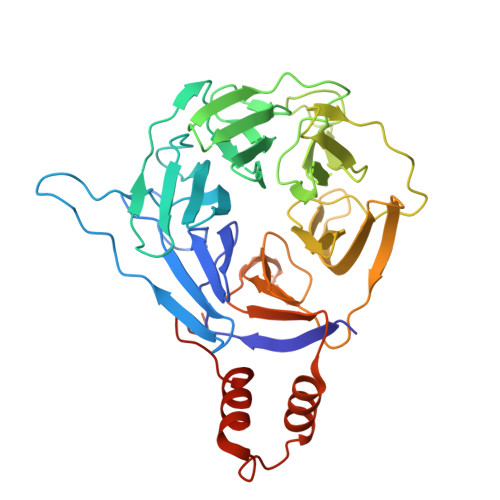❮
Member 1 of 4
❯

Explore in 3D: Sequence Alignments
Kelch domain-containing protein 3
UniProtKB accession: Q9BQ90
Grouped By: Matching UniProtKB accession
Group Content:
Polymer Entities matching query 4
Go to UniProtKB: Q9BQ90
UniProtKB description: Substrate-recognition component of a Cul2-RING (CRL2) E3 ubiquitin-protein ligase complex of the DesCEND (destruction via C-end degrons) pathway, which recognizes a C-degron located at the extreme C terminus of target proteins, leading to their ubiquitination and degradation (PubMed:29775578, PubMed:29779948). The C-degron recognized by the DesCEND pathway is usually a motif of less than ten residues and can be present in full-length proteins, truncated proteins or proteolytically cleaved forms (PubMed:29775578, PubMed:29779948). The CRL2(KLHDC3) complex specifically recognizes proteins with a glycine (Gly) at the C-terminus, leading to their ubiquitination and degradation: recognizes the C-terminal -Arg-(Xaa)n-Arg-Gly, -Arg-(Xaa)n-Lys-Gly, and -Arg-(Xaa)n-Gln-Gly degrons (PubMed:29775578, PubMed:29779948). The CRL2(KLHDC3) complex mediates ubiquitination and degradation of truncated SELENOV and SEPHS2 selenoproteins produced by failed UGA/Sec decoding, which end with a glycine (PubMed:26138980). May be involved in meiotic recombination process (PubMed:12606021).
Group Members:
Query History
❮
1 / 1
❯
Release Date:
Structure Features
Determination Methodology
Sequence Features
Number of Source Taxonomies
Experimental Features
Experimental Method
Resolution
Organisms
Organism
Taxonomy
Protein Domains
PFAM Domain
InterPro Domain
Function
GO Molecular Function
GO Biological Process
GO Cellular Component
Disease Association












